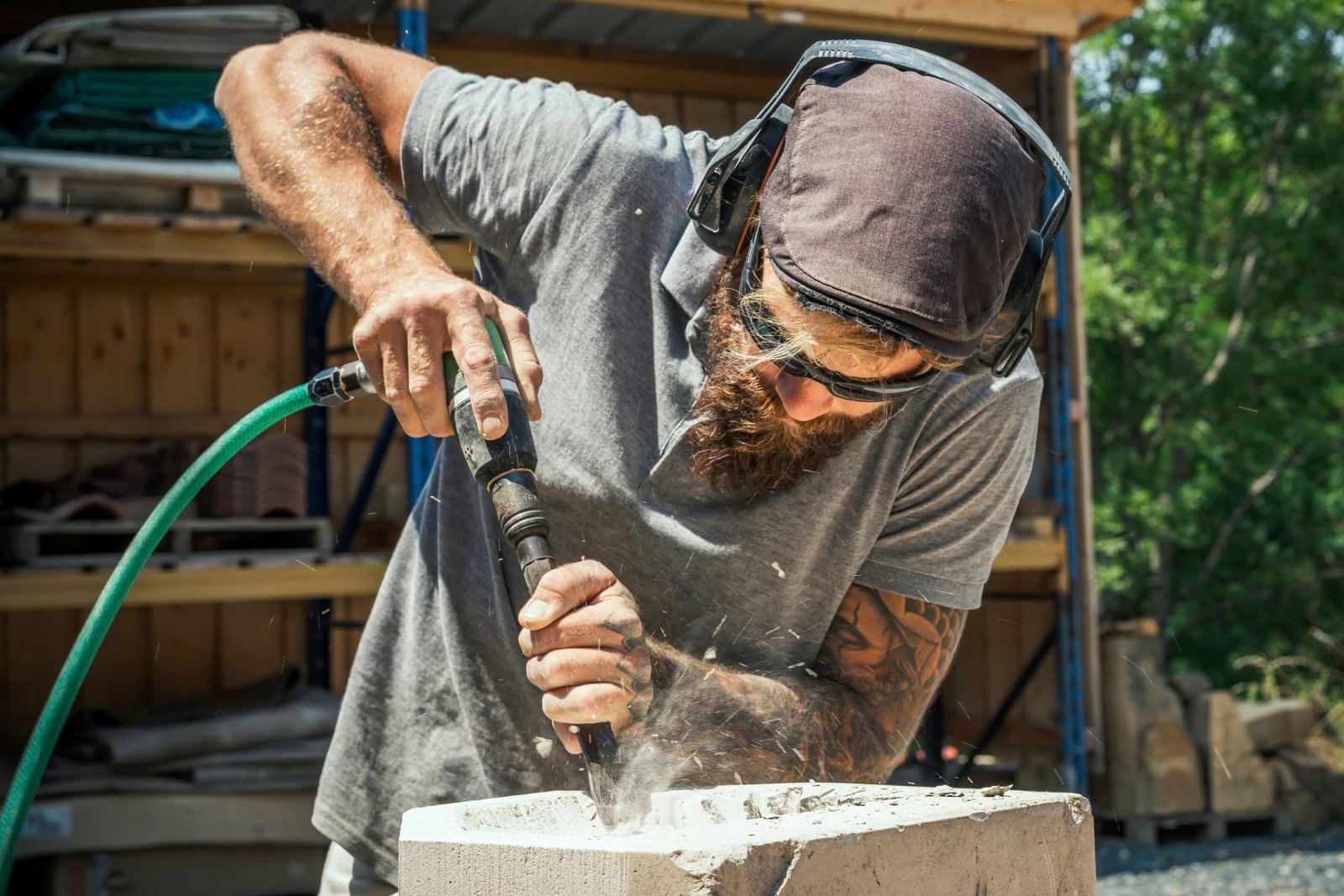
Transporting a granite countertop is a task that requires careful planning and precise execution. As a premier countertop material, granite not only enhances the aesthetic appeal of your kitchen worktop
Transporting a granite countertop is a task that requires careful planning and precise execution. As a premier countertop material, granite not only enhances the aesthetic appeal of your kitchen worktop but also brings durability and timeless elegance to your space. However, due to its weight and fragility, moving a granite countertop safely can be challenging. In this comprehensive guide, we explore everything you need to know about transporting your granite countertop—from understanding its properties and challenges to practical tips on handling and installation. We’ll also touch upon related materials such as quartz countertop and marble countertop, compare countertop design options, and share insights on innovative kitchen countertop ideas.

Understanding Granite as a Countertop Material
Granite has long been celebrated as a robust and attractive countertop material. Extracted from natural stone, each slab of granite is unique, offering distinct patterns and colors that can complement any kitchen design. Its durability and resistance to heat and scratches make it an excellent choice for busy kitchens and modern kitchen countertop setups.
The Unique Properties of Granite Countertops
- Natural Beauty: Every granite countertop is one-of-a-kind, with intricate veining and color variations that enhance your countertop design.
- Durability: Granite is known for its strength and longevity, which makes it ideal for high-traffic areas.
- Heat and Scratch Resistance: Unlike many other countertop materials, granite can withstand high temperatures and resist everyday wear and tear.
- Maintenance: With proper care, including regular sealing and cleaning, granite countertop remain pristine for decades.
While granite is an exceptional choice, alternatives like quartz countertop and marble countertop are also popular. Each material comes with its own set of benefits and maintenance requirements, allowing homeowners to select the option that best fits their lifestyle and design vision.
Challenges in Transporting Granite Countertops
Transporting a granite countertop is not as straightforward as moving other lighter materials. The process requires an understanding of its weight, fragility, and the logistics involved.
Weight and Fragility
Granite is incredibly dense and heavy. This weight, while a testament to its durability, can make it difficult to handle without the right equipment and expertise. Additionally, granite is prone to cracking or chipping if not secured properly during transportation.
Planning and Preparation
Proper planning is essential to avoid damage during transport. This includes measuring the dimensions of the countertop, preparing the vehicle, and ensuring that all necessary equipment is on hand. A detailed plan will help mitigate risks and streamline the process, ensuring that your countertop arrives at its destination intact.
Essential Tips for Safe Transportation
Ensuring the safe transport of your granite countertop involves a combination of careful planning, the right equipment, and expert handling. Here are some practical tips to help you through the process.
Securing the Granite Countertop
Before you begin transporting your granite countertop, it’s crucial to secure it properly to prevent any movement that could lead to damage. One of the most effective ways to secure your countertop is by using ratchet tie down straps. These straps help stabilize the countertop, ensuring it stays in place throughout the journey.
Using Ratchet Tie Down Straps
Using the correct tie down method is paramount. How to use ratchet tie down straps provides a detailed guide on the proper usage of these straps. By following these steps, you can ensure that your countertop is securely fastened and less likely to shift during transit.
Proper Packaging and Padding
In addition to securing the countertop with straps, you must protect it from scratches and impacts. Use padded blankets or foam coverings to wrap the countertop. Ensure that the protective material covers all surfaces, paying close attention to the edges where damage is most likely to occur.
Choosing the Right Vehicle
Selecting a vehicle with a flat, spacious, and stable bed is essential for transporting granite countertops. A truck with a lift gate or a specialized vehicle designed for transporting heavy materials can make the process significantly easier. Ensure that the vehicle’s loading area is clean and free of debris to prevent any abrasion on the countertop.
Alternatives to Granite: Quartz and Marble Countertops
While granite is a popular choice, many homeowners also consider alternatives like quartz countertop and marble countertop for their unique aesthetics and properties.
Quartz Countertops
- Consistency in Appearance: Unlike natural granite, quartz countertops offer a uniform look.
- Low Maintenance: Quartz is non-porous and does not require sealing, making it easier to maintain.
- Design Flexibility: Available in a wide range of colors and patterns, quartz can mimic the appearance of natural stone while providing enhanced durability.
Marble Countertops
- Timeless Elegance: Marble provides a luxurious look with its classic veining.
- Heat Sensitivity: Marble is more prone to scratches and stains compared to granite, so extra care is needed.
- Maintenance: Regular cleaning with pH-neutral products is required to maintain its appearance.
Each of these materials has its own merits, and the choice often depends on your lifestyle, aesthetic preference, and willingness to perform routine maintenance.
Steps for Successful Countertop Installation
Once your granite countertop has been transported safely, the next step is installation. Proper installation is just as critical as the transport process itself.
Preparing for Installation
Before installation, it’s essential to prepare the area. This includes ensuring that the underlying cabinets and kitchen worktop structures are level and ready to support the new countertop. A successful installation begins with meticulous preparation.
For detailed guidance on setting up your space, consider reading Preparing an installation of countertop. This resource provides expert tips on getting your kitchen ready for a new countertop installation.
Professional Countertop Installation
While some homeowners may choose a DIY approach, hiring professionals for countertop installation can ensure that your granite countertop is installed correctly and safely. Professionals have the tools, expertise, and experience necessary to handle heavy materials like granite, minimizing the risk of damage during the process.
Countertop Design and Kitchen Worktop Ideas
The installation process is an opportunity to refine your overall countertop design. Think about how your new granite countertop will integrate with other elements of your kitchen, such as cabinets, backsplashes, and flooring. Innovative kitchen countertop idea can elevate the look of your kitchen and make it a true centerpiece of your home. For inspiration on design trends and layout options, check out this excellent kitchen countertop idea guide.
Maintenance and Care After Transportation
Once your granite countertop is installed, maintaining its beauty and functionality is key. Proper care not only preserves the look of your countertop but also extends its lifespan.
Cleaning Your Granite Countertop
Regular cleaning is crucial to keep your granite countertop looking pristine. Avoid harsh chemicals and abrasive tools that could damage the surface. Instead, opt for a mild dish soap mixed with water and use a soft cloth for daily cleaning.
For a more detailed cleaning routine, explore how to clean granite countertop. This guide provides step-by-step instructions on maintaining the natural beauty of your granite countertop without causing damage.
Sealing and Protection
Granite countertops should be sealed periodically to protect against stains and moisture. Sealing creates a barrier that prevents liquids from penetrating the stone, ensuring that your countertop remains resilient over time. Follow manufacturer recommendations for sealing frequency to keep your countertop in optimal condition.
Regular Inspection
After installation, perform regular inspections of your countertop. Check for any signs of damage, such as chips or cracks, especially along the edges where impact during transportation might have occurred. Addressing issues early on can prevent further damage and prolong the life of your countertop.
Tips for Handling and Moving Other Countertop Materials
While granite is a favored countertop material for many due to its durability and beauty, other materials like quartz countertop and marble countertop also require special attention during transport. Here are some additional tips for moving these materials safely:
Handling Quartz Countertops
Quartz is generally more consistent in appearance and less porous than granite, but it can still be heavy and delicate. Use similar transport methods as granite, ensuring that the countertop is well-supported and padded during movement.
Moving Marble Countertops
Marble is even more susceptible to scratching and etching than granite. Extra care should be taken when transporting marble countertops, including the use of additional protective padding and ensuring that the vehicle is free of any abrasive materials.
By understanding the unique requirements of each countertop material, you can tailor your transportation and installation methods to suit the specific needs of your project.
The Role of Ratchet Tie Down Straps in Secure Transportation
One of the most critical tools for transporting heavy materials like granite is the ratchet tie down straps. These straps provide the necessary tension to keep your countertop securely in place during transit.
Ratchet tie down straps are designed to secure large, heavy objects by tightening around them with a ratchet mechanism. This mechanism allows for controlled tensioning, ensuring that the object is held firmly in place. Using these straps correctly minimizes movement and reduces the risk of damage.
How Ratchet Tie Down Straps Work
For those who are unfamiliar with the proper usage, how to use ratchet tie down straps is an invaluable resource. Following the guidelines provided can make all the difference in safely transporting your granite countertop.
Final Thoughts on Transporting Your Granite Countertop
Transporting a granite countertop requires attention to detail, the right tools, and an understanding of the material’s unique properties. By planning ahead, using essential tools like ratchet tie down straps, and following best practices for packaging and securing, you can ensure that your countertop is delivered safely and ready for installation.
Recap of Key Points
- Understanding the Material: Granite, as a premium countertop material, offers unmatched durability and aesthetic appeal but demands careful handling due to its weight and fragility.
- Proper Preparation: Detailed planning, correct vehicle selection, and the use of protective materials are essential for preventing damage.
- Secure Transportation: Using ratchet tie down straps and proper padding techniques are critical for keeping the countertop stable during transit.
- Installation and Design: Once transported, proper installation and a well-thought-out countertop design enhance the overall look of your kitchen, integrating seamlessly with other kitchen countertop elements.
- Maintenance: Regular cleaning—how to clean granite countertop—and periodic sealing will preserve the longevity and beauty of your countertop.
Conclusion
Transporting a granite countertop is more than just a logistical challenge; it’s a crucial step in preserving the investment you’ve made in a beautiful and durable kitchen worktop. With careful planning, the use of specialized equipment such as ratchet tie down straps, and adherence to expert guidelines on installation and maintenance, you can ensure that your granite countertop arrives safely and performs brilliantly for years to come.
Whether you’re upgrading your kitchen with the timeless elegance of granite, considering alternatives like quartz countertop or marble countertop, or exploring fresh kitchen countertop ideas to elevate your home’s style, understanding the nuances of transporting and installing your countertop is essential. With the right approach, you can transform your kitchen into a space that combines functionality with stunning design.
For more insights and inspiration on transforming your kitchen, consider exploring a kitchen countertop idea that aligns with your style. And as you move forward with your project, remember that proper care—from how to use ratchet tie down straps correctly to Preparing an installation of countertop—is key to a successful outcome.
By following the advice outlined in this guide, you’ll be well-equipped to handle the challenges of transporting a granite countertop and enjoy the lasting beauty and functionality of one of the finest countertop materials available today.
Embrace these expert tips and let your granite countertop become the centerpiece of a kitchen that is not only aesthetically pleasing but also built to last. Happy transporting, installing, and designing!

